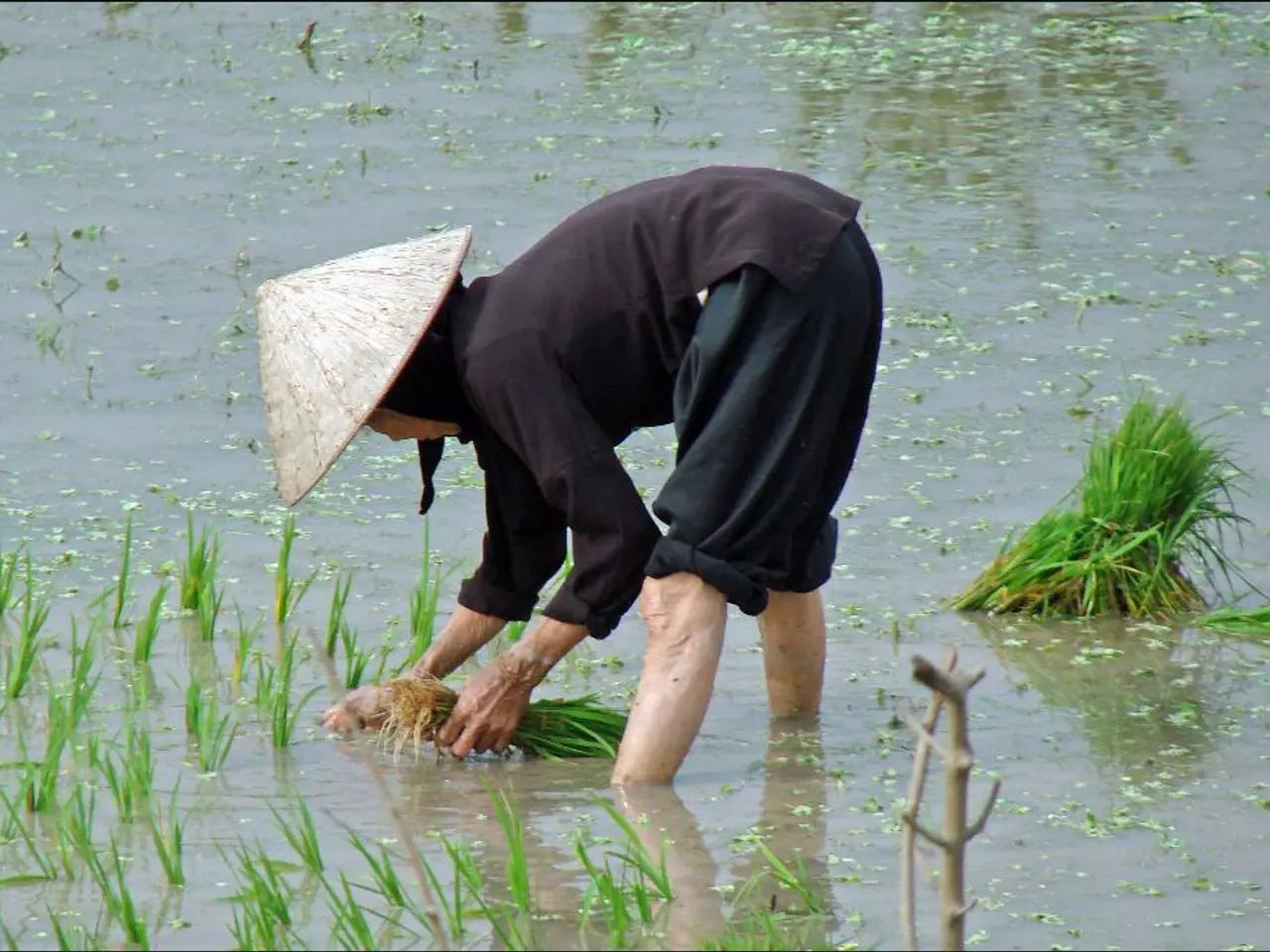Common Errors in Seedling and Tender Plant Cultivation Leading to Failure Germination
In the world of gardening, there's no shortage of advice for novice gardeners. However, some common mistakes can lead to poor growth and decreased crop yields. Here's a list of common errors to avoid when planting and transplanting seedlings:
Starting seeds too early or too late: Beginning seed planting too early can cause seedlings to become leggy and weak due to insufficient light, while planting too late may not give plants enough time to mature. Using a seed starting calendar for your region helps time planting correctly.
Not hardening off seedlings: Seedlings grown indoors are sensitive to outdoor conditions. Transplanting without gradually exposing them to sun, wind, and temperature changes causes shock, leaf scorch, and drooping stems. To prevent this, gradually introduce seedlings to outside conditions over 1-2 weeks before planting them in the garden.
Overcrowding seedlings: Planting seeds or transplanting seedlings too close restricts airflow and light, leading to weak, spindly plants. Respecting appropriate spacing based on mature plant size prevents this problem.
Incorrect transplanting depth: Some plants require planting at or slightly deeper than their original depth (e.g., tomatoes deeper), but planting seedlings too shallow or too deep can stress roots. Gently firm soil around roots to eliminate air pockets and water immediately after transplanting to settle soil.
Choosing inappropriate locations: Placing seedlings or beds in shaded areas or spots with poor sunlight limits growth. Garden areas need at least 8 hours of direct sun daily for most vegetables.
Overwatering or underwatering: New seedlings are delicate; overwatering can cause root rot and damping off disease, while underwatering stresses plants. Use consistent, moderate moisture and proper soil drainage.
Starting too large a garden area: Trying to manage a large number of seedlings or plants can overwhelm beginners and lead to neglect. Starting with a smaller plot allows mastery of plant care before expansion.
In addition to these mistakes, common pitfalls include misjudging timing, inadequate hardening off of seedlings, overcrowding, incorrect planting depth, poor location choice, overwatering, and starting too large a garden. These errors can be avoided with careful planning and technique.
To ensure your plants thrive, it's crucial to site them away from convenient water to avoid overwatering and its potential consequences like damping off and root rot. It is also crucial to select the right location for each plant, as every plant has different needs regarding sunlight, temperature, and soil type. Most plants need 6 hours of sunlight per day, with sun lovers like peppers thriving in 8 hours or more. Certain plants are sensitive to the hottest rays of the sun and should have some protection during the noontime scalding rays.
When planting seedlings and other small plants, they must be handled gently to avoid damaging plant material. Pre-dig a hole large enough that the little roots can spread out and down a bit. For larger plants, soil should be loosened about twice the depth and width of the roots.
Hedging plants need to be set apart far enough that the mature plants will just be adjacent. Seed packets provide instructions for plant spacing to ensure adequate distance between plants. Cool-season crops like kale or turnips can thrive and survive a late frost, while tender plants like tomatoes and basil would succumb to cold.
Testing soil to determine pH and adding sulfur or lime as needed will help balance the pH for optimal plant health. Plants prefer a prepared bed that meets their needs, which usually includes some organic nutrients in the soil, a well-draining site, and an average soil pH (6.0-7.0). Improving soil by incorporating organic matter can enhance fertility and drainage.
In the case of pot-bound plants, roots need to be gently teased out from the tangled mess. Failing to harden off seedlings can make them more susceptible to damage from outdoor conditions. Failing to observe and treat pests and diseases may lead to plant loss. Over or under-fertilizing can both be damaging.
By following these guidelines—correct timing, gradual acclimation, appropriate spacing, site selection, watering management, and scaling garden size—novice gardeners can improve seedling success and develop healthy gardens. Additional practical advice includes labeling seedlings clearly to avoid confusion, ventilating seed trays to prevent mold, and transplanting seedlings during cooler parts of the day to reduce shock.
A novice gardener should be mindful of their lifestyle and lifestyle choices when starting a home-and-garden project, particularly in the realm of gardening. For instance, when transplanting seedlings, it's crucial to avoid planting too early or too late, and to ensure proper hardening off to prevent shock. Similarly, choosing the correct location for plants based on their specific sunlight, temperature, and soil type needs is essential for optimal plant growth.





